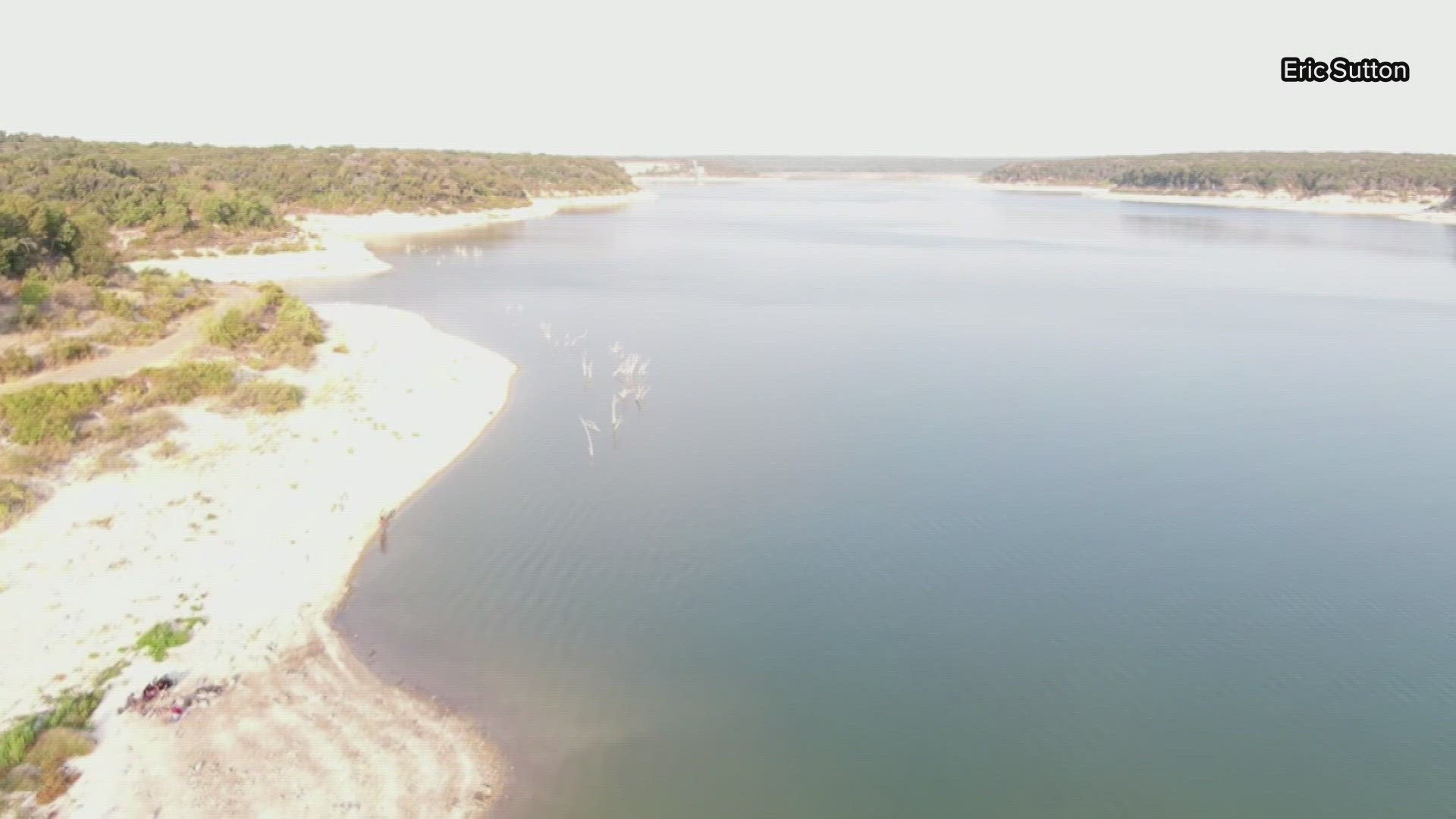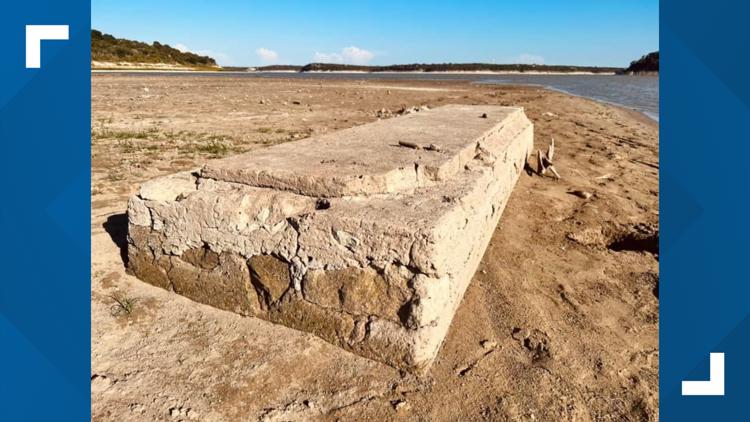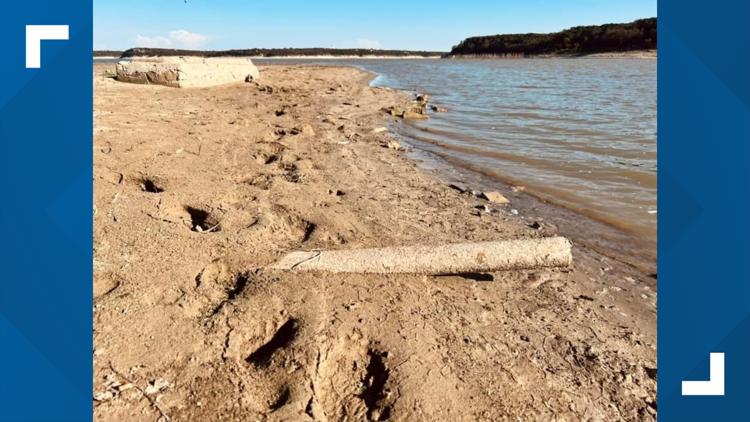TEXAS, USA — With rain in the forecast, the question now is whether it will actually help fill up our lakes from record low levels. Experts across Central Texas say it could take above-average rainfall for several weeks and potentially months to see higher lake levels, or it could even take flooding.
Aaron Abel, Water Services Manager at Brazos River Authority, says Belton Lake and Stillhouse Hollow Lake are the lowest they have been since the late 60's and early 70's.
Belton Lake is about 17.8 feet below the top of its conservation. It is 57% full and was last full in August of 2021.
Stills from Belton Lake
Abel says for Belton Lake to fill back up, we need significant rainfall in the western part of Bell County through Coryell into Hamilton.
Stillhouse Hollow Lake is about 18.3 feet below the top of its conservation and is 58% full. It was last full in early September of 2021. For normal lake levels, Abel says we need to see rainfall throughout Lampasas and Mills.
Abel believes future rain and cooler temperatures will help with the water supply as we head into fall.
"That does really help with water supply because we will have less evaporative losses on the reservoirs," Abel said. "We should start to see a decline or a slowdown in the lake level drops. Typically in the fall and winter, you know, we won't see as much water use in the system, and then the evaporative demands are reduced in those times as well."
Owl Creek levels
Shannon Hamilton, Executive Director of Central Texas Water Coalition in Austin, says for their area, the numbers are historically low.
"We are dropping about 2000 acre-feet a day," Hamilton said. "That's never happened. One of our county commissioners said, 'We cannot conserve our way out of this one.' We have got to come up with a better plan."
Hamilton believes it's going to take a major event to get Austin lake levels back to normal.
"The last time the drought was broken, it took two hurricanes and no high-pressure heat dome over us," Hamilton added. "It takes an event, which sadly means we're talking flood and destruction to fill our lakes. As y'all are getting a better look at what rain looks like again, by the time it makes it to Austin, it is completely dissipated."
In the meantime, conserving water is more crucial than ever.
"If we run out of water, we can't just truck it in," Hamilton said. "This is worse than an ERCOT situation, but that is where we're headed. People have got to stop worrying about their lawn. Your lawn will come back, but you need to worry about turning on your faucet."
Todd Votteler, Editor-in-Chief of the Texas Water Journal, says they are at 67% of their water supply capacity in large reservoirs.
"If you look at the long-term forecast that's come out from NOAA National Oceanographic and Atmospheric Administration's Climate Prediction Center, we're looking at a dry period here, up until December, so it's not likely to change all that much based on the forecast," Votteler said. "We have an unfortunate history in Texas of droughts being broken by floods. Not too many people are thinking about floods, obviously, because of the lack of water everywhere and how brown everything is, but that's something to keep in mind."
Votteler understands some people might be frustrated because they are experiencing their first taste of drought in Texas.
"Depending on what part of the country you come from, it can be kind of a rude awakening," Votteler said. "Look at the drought and say, 'Okay, this drought could go on for a while. I'm going to go ahead and start conserving water.'"
For information on conserving water and restrictions, visit your city's website.
More stories by Reporter Sydney Dishon:

































